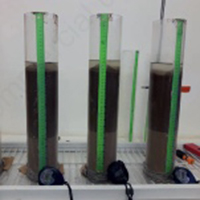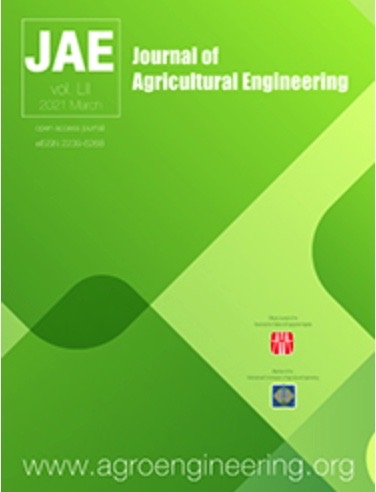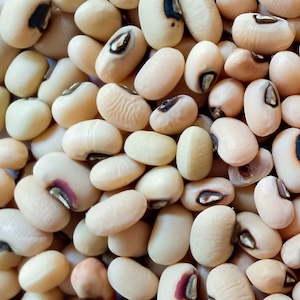Laboratory evaluation of falling-head infiltration for saturated soil hydraulic conductivity determination

All claims expressed in this article are solely those of the authors and do not necessarily represent those of their affiliated organizations, or those of the publisher, the editors and the reviewers. Any product that may be evaluated in this article or claim that may be made by its manufacturer is not guaranteed or endorsed by the publisher.
Authors
Falling-head one-dimensional infiltration procedures, such as the simplified falling-head (SFH) technique, yield estimates of saturated soil hydraulic conductivity, Ks, with parsimonious and rapid experiments. Factors that can influence determination of Ks by the SFH technique were tested in the laboratory on three repacked soils differing by particle diameter ranges (0-2000, 0- 105 and 105-2000 mm, respectively). Using the theoretically calculated depth of ponding on the infiltration surface, D, instead of the measured one had a small impact on the Ks calculations (means differing by a factor of 1.1-1.2, depending on the soil). For the finest soil, Ks decreased by 3.1 times as D increased from 40 to 135 mm but D did not affect Ks for the coarsest soil, yielding in general the highest Ks values. The abrupt increase of the infiltration rate close to the end of the run did not influence appreciably Ks calculations since it determined an increase in Ks by a mean factor never exceeding 1.1. The most frequent result of the developed procedure for estimating the α* parameter was failure of the experiment although the valid α* calculations were plausible, being higher for the coarse textured soil (17 m–1) than the finer soils (9.2-9.3 m–1). The depth of the wetting front at the end of the run was 1.1-1.2 times deeper than that calculated theoretically before the run, depending on the soil. In conclusion, the method used to determine D should not affect very much Ks determination but larger D values can yield smaller Ks values in fine-textured soils. Air escapes from the sampled soil volume when almost all water had infiltrated but this circumstance does not have a great impact on calculation of Ks. A falling-head one-dimensional ponded infiltration process is not recommended to estimate α*. The theoretical depth of the wetting front can approximately be predicted before the run. The SFH technique appears a rather robust method to simply and rapidly determine Ks.












